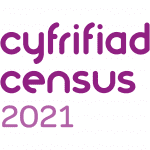It’s simpler than ever for people to get information quickly, with online news, social media and digital platforms so easily accessible, but with many of these platforms being unregulated spaces, this can lead to the spread of ‘misinformation’.
What’s ‘misinformation’?
Basically, misinformation is when false or misleading information spreads quickly…and this can cause great harm.
With nearly half of the Welsh population relying on social media for their news, it’s important for people to realise how to separate information from misinformation. If you don’t, you can easily spread misinformation too!
Make sure you know about changes to Covid-19 restrictions in Wales
How does this happen?
First, it’s worth examining the different types of misinformation, which can be broken down into five categories.
• Misinformation. Misinformation is false or inaccurate information. It can take the form of a social media post, a real or edited picture, a video clip, a meme or news story. It can be shared inadvertently without realising that the information is false or inaccurate.
• Disinformation. Disinformation takes the same form as misinformation but it’s deliberately created to deceive, mislead and influence. This could be for personal, political or economic purposes.
• Fake news. ‘Fake news’ is used to describe inaccurate or misleading content that is often sensational or emotive. It may include misinformation, disinformation or both.
• Clickbait. Clickbait is content such as a headline, designed to attract your attention and encourage you to click on a link taking you to other online content e.g. an article, image or video.
• Deepfakes. A ‘deepfake’ refers to a photo or video where the faces have been swapped, or digitally altered. Creating fake images in this way can appear to show someone saying something or doing something they never really said or did.
Spotting misinformation
And this leads on to the different ways to spot misinformation. There’s a few ways you can do this…
• Consider the source. Is it reliable or credible? Who created the information and what are their motives? What is the intention of the information? Does the domain or URL name seem strange or similar to another well-known website? These are all questions you should ask yourself.
• Consider the style. Misinformation can be written to grab attention and encourage people to share it around. Is the headline shocking or emotive? Consider if it’s written as fact, opinion or even parody? Is it clickbait? Read the full article, not just the headline.
• Check multiple sources. Check the accuracy of the story by comparing against other sources. Are they all saying the same thing?
• Fact check it. There are a number of independent fact checking websites, such as Full Fact or Snopes, who investigate and review information on trending and topical issues.
Why is it important?
It’s particularly concerning when people base their decisions on what can be false or misleading information. An example of this is health choices, which can be particularly dangerous.
Ways misinformation can cause harm include:
• encouraging people to make decisions that could damage their health or that of others
• prompting people to make damaging economic or financial decisions
• undermining respect and tolerance towards other people or even driving discrimination or hate
• harming people’s mental state or health (for example by causing anxiety or stress)
• damaging trust or undermining participation in social or democratic institutions and processes (such as elections)
• undermining public confidence and trust in news and information sources
• otherwise generating confusion, uncertainty or doubt about historical, current or future events or trends, leading to damaging decisions or actions
Be extra cautious about the information you share. Even with the best intentions, it’s easy to share something false or misleading.
For more information, visit the Hwb page ‘Stop the spread of misinformation’.
[button color=”” size=”large” type=”square_outlined” target=”new” link=” https://gov.wales/current-restrictions “] SEE LATEST COVID RULES [/button]








